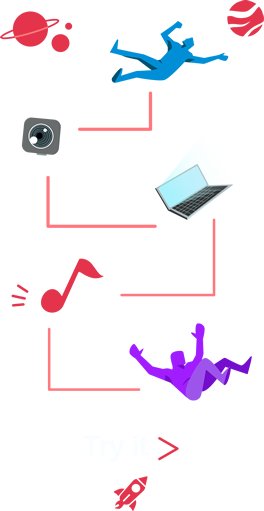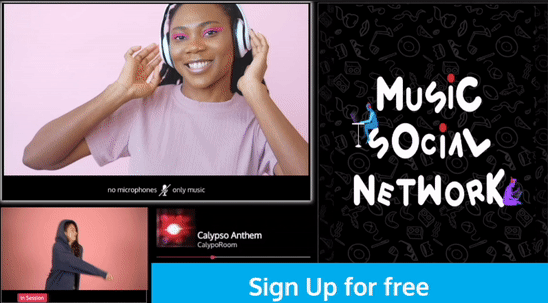Shared music experiences in the age of social networks
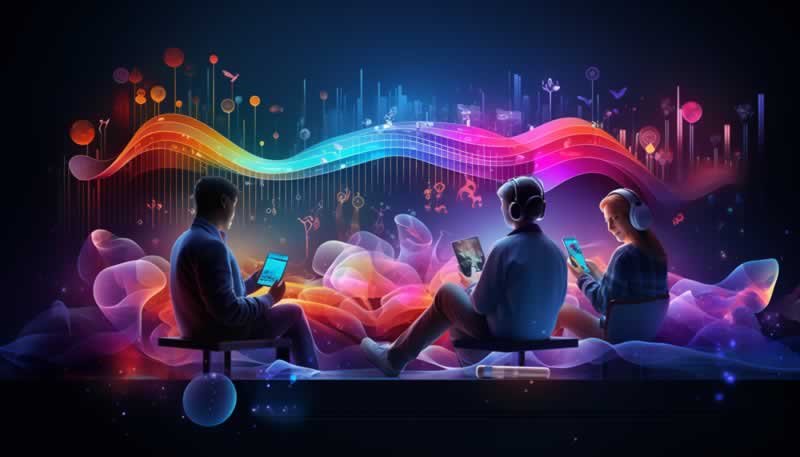
Table of content
Shared music experiences in the age of social networks - Introduction
Remember the times when you and your friends used to gather around a stereo, all excited, waiting for your favorite song to play?
The joy, the connection, the shared experience - it was magical, wasn't it? Now, think of the way we listen to music today.
Most of it happens through our screens, right?
Whether you're rocking out to an online concert or jamming to a shared playlist with friends halfway across the world, social networks have given us a new kind of shared music experience.
This article aims to take you on a journey through time - from shared music experiences of yesteryears, the rise of social networks and their impact on our music tastes, all the way to the future of shared music experiences.
Plus, we'll touch on the challenges and advantages of these digital shared experiences, and even take a peek into the future.
Intrigued? Let's dive into the rhythm of this transformative era of music together, shall we?

KEY TAKEAWAYS
The Rise of Online Music Sharing: The evolution of the internet has radically transformed how we consume music. We no longer simply listen to music; we share, recommend, and discuss it across various digital platforms.
Influence of Social Networks: Social networks have become significant in shaping our musical tastes. Our online communities often act as a curated source of music discovery, promoting diversity in our music playlists.
Disruption of Traditional Music Industry: The traditional music industry, which was once dominated by record labels, has been disrupted by digital music sharing. Artists now have the ability to reach audiences directly, reshaping the distribution of music.
The Role of AI in Music Discovery: AI has a growing role in suggesting music based on our listening history, personalizing our music experiences. This allows listeners to discover new genres and artists they may not have found otherwise.
Calypso's Unique Approach: Calypso takes a distinctive approach to music sharing, harnessing the power of social networks to influence our music journeys. It blends the collective intelligence of users with AI to offer a dynamic music discovery platform.
Challenges and Future Prospects: Despite its potential, the digital music sharing era presents challenges, including copyright issues and artist remuneration. Nevertheless, it also opens new avenues for innovation, like integrating augmented reality in music experiences.
Brief history of shared music experiences
Let's take a step back into the past. Picture this - a roaring crowd at a live concert, the electric atmosphere at music festivals, or the cosy, intimate gatherings for listening parties.
The music was not just about the melody, rhythm, or the lyrics; it was about being together, swaying to the same beats, and sharing the same emotional journey.
There was something magical about being in the same space, feeling the energy of the crowd, and knowing that the person next to you was just as moved by the music as you were.
It was these collective experiences that made music so much more than just a melody. It was a language, a bond, a tool that brought people together.
But then, the digital age rolled in, and boy, did it change the game! The way we listen, share, and enjoy music started transforming.
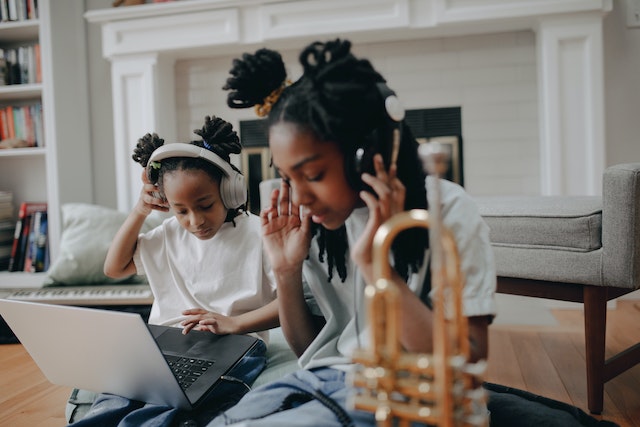
Concerts moved from arenas to computer screens, music festivals turned into live streams, and listening parties found a new home in chat rooms.
Thanks to the digital revolution, music is now accessible to anyone, anywhere, at any time. It's easier than ever to discover new artists, share your favorite songs, and even attend concerts from the comfort of your couch.
This digital transformation has made music more accessible, but it's also raised some questions.
How has this shift impacted our sense of community and connection? And how can we recreate the magic of shared music experiences in the digital age?
The rise of social networks and their impact on music
Take a moment and imagine your life without social networks. Difficult, isn't it? Over the years, social networks have become such an integral part of our lives.
They connect us with friends and family, keep us updated with the latest news, and yes, even shape our music experiences.

Social networks started as platforms for connecting people, but they quickly grew into powerful tools that influence various industries, and music is no exception.
Artists began using these platforms to promote their work, turning the music industry on its head.
Traditional music promotion tactics took a backseat as social media campaigns, hashtags, and viral challenges started ruling the roost.
In fact, 32% of consumers say that they find new music on social media, with younger consumers being especially likely to find artists they like on platforms such as TikTok, Instagram and Facebook.
Remember the times you stumbled upon a new artist, a new song or an entirely new music genre thanks to a friend's post or a trending hashtag?
Or when a song snippet in a viral video caught your ear, leading you to the full track? That's social networks working their magic.
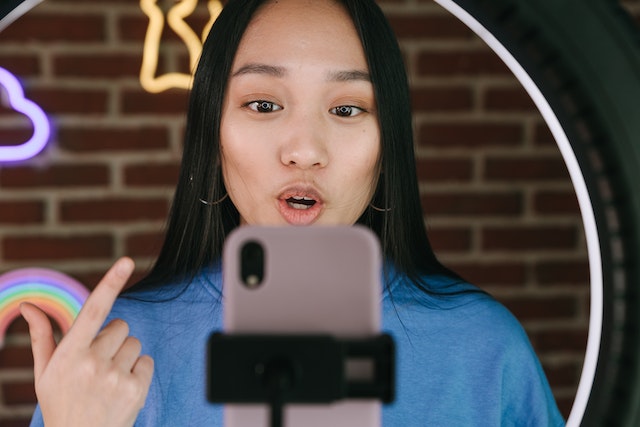
Music on social networks has also become a shared experience. We've all seen, or perhaps even created, shared playlists for different moods and occasions.
We've attended live-streamed concerts, enjoyed DJ sets on Instagram Live, or even participated in global sing-alongs.
These platforms have not just changed the way we listen to music, they've changed the way we experience it. They've made music a more social, more shared, and more connected experience.
But how exactly do these shared music experiences work in the digital age? Let's take a closer look.
After all, as Plato said, "Music gives a soul to the universe, wings to the mind, flight to the imagination, and life to everything.”
Music sharing platforms in the social network era
In the digital age we live in today, shared music experiences have found a new home - dedicated music sharing platforms.
These unique platforms are like bustling virtual concert venues, lively music festivals, or cosy jam sessions, all rolled into one, and they are changing the way we experience music.
Music sharing platforms are not just websites or apps; they're digital communities where music lovers from all over the world can come together.
Whether it's discovering new songs and artists, sharing your all-time favorites, or experiencing live concerts with friends, these platforms offer it all.
First on our list is Spotify. Known for its vast music library and user-friendly interface, Spotify has made a name for itself with features like shared playlists and Discover Weekly, which offers song recommendations based on your listening history.
It’s like having your personal DJ, ready with a new song list every week.
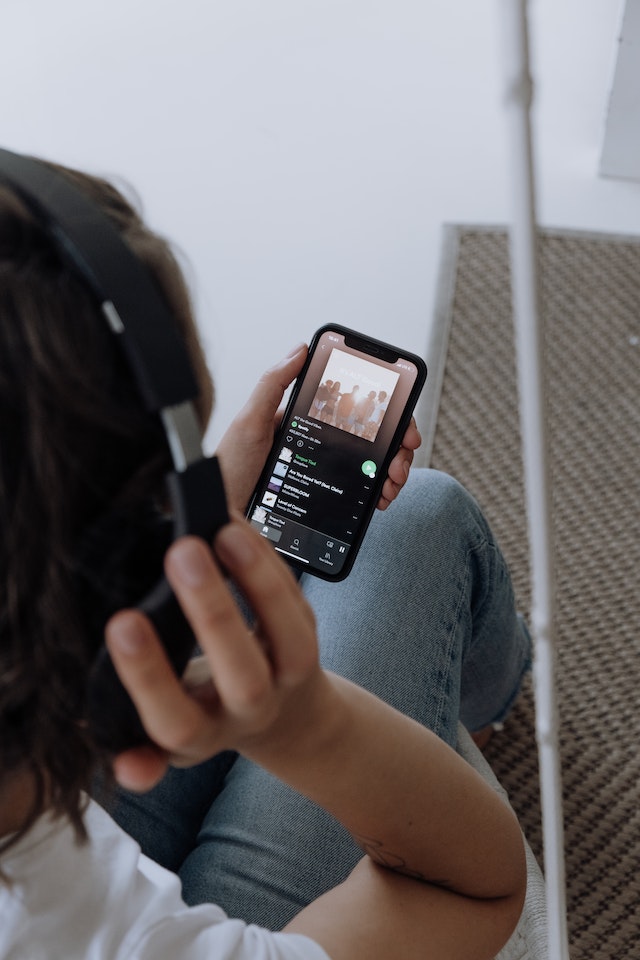
Next, we have SoundCloud. A haven for independent artists, SoundCloud provides a platform for upcoming musicians to share their music and connect directly with their fans.
It's a great place to discover new music that you wouldn't find on mainstream platforms.
Then, there's YouTube Music. A part of the YouTube family, it's not just for listening to your favorite tracks but also for watching music videos, live performances, and even behind-the-scenes footage.
It's like a backstage pass to your favorite artist's world. However, this is just the beginning.
The world of music sharing platforms is continually evolving, with new platforms like CalypsoRoom pushing the boundaries of shared music experiences.
So, buckle up, music enthusiasts! It's time to dive into the captivating world of music sharing platforms.
Let's explore, discover, and most importantly, let's enjoy music together. Because after all, isn't that what music is all about?

CalypsoRoom: reinventing music experiences
Buckle up, music lovers, because we're about to take a leap into the future of music sharing with CalypsoRoom.
Imagine a space where you can not only listen to your favorite songs with your friends but also see their reactions, live and in real-time.
That's right! CalypsoRoom is a unique platform that lets people listen to the same music together while connecting via webcam.
Remember the emotional intimacy of a live concert or a cosy listening party? The collective excitement, the shared emotions, the unspoken bond that music creates?
CalypsoRoom recreates that magical experience digitally.
The beauty of CalypsoRoom lies in its blend of the physical and digital. On one hand, you have the convenience and accessibility of digital music.
On the other, you have the emotional connection and unity of a live performance. It's the best of both worlds, coming together to create an immersive and intimate music experience.
But let's not forget the user experience. After all, the best ideas are nothing without great execution.
CalypsoRoom shines here as well with its user-friendly interface and intuitive features. It's designed to make music sharing as easy and enjoyable as possible.
Whether you're hosting a virtual listening party or jamming to a shared playlist, CalypsoRoom ensures that you have a smooth, hassle-free experience.
In conclusion, CalypsoRoom is truly reinventing music experiences in the social network era.
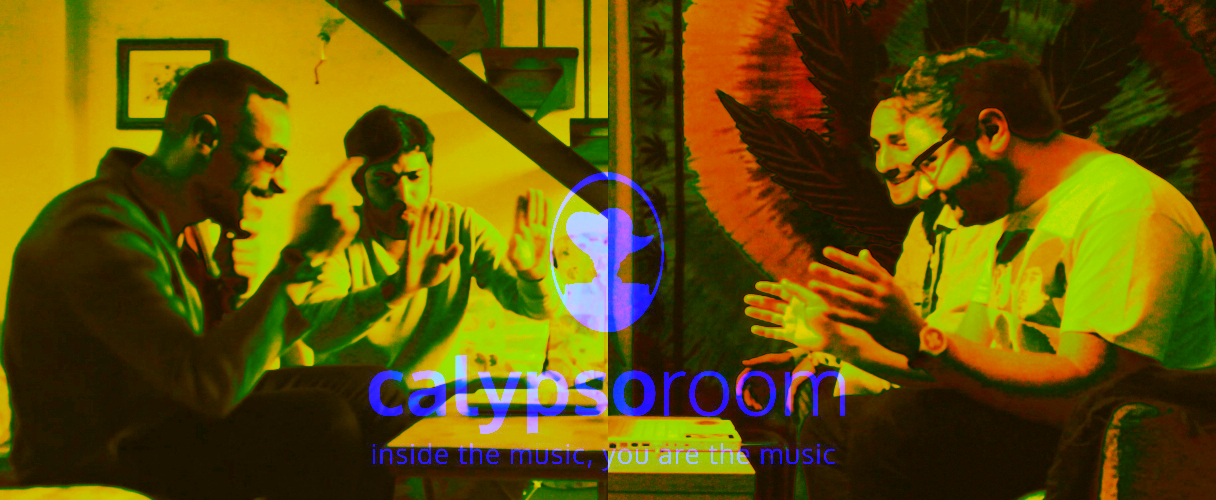
Benefits and challenges of shared music experiences in the digital age
We've ventured deep into the world of shared music experiences in the digital age, exploring how platforms like CalypsoRoom have transformed the way we enjoy music.
But like any exciting journey, this one also comes with its share of peaks and valleys. Let's explore the advantages and potential challenges that come with these innovative music platforms.
The advantages of platforms like CalypsoRoom are plentiful. For starters, they offer ease of access. Gone are the days when you had to be in the same physical space to enjoy music with friends.
Imagine hosting a listening party with friends in different time zones, or jamming to the same beat with a buddy who lives halfway across the world. Geographical barriers? What's that?

Another advantage is the shared experiences that platforms like CalypsoRoom facilitate. Music has a way of evoking emotions and creating memories.
Now, these feelings and memories can be shared instantly and collectively, creating a strong sense of unity and connection.
It's like being at a concert, but without the hustle and bustle.
Despite these benefits, the digital age of shared music experiences does pose some challenges.
And while technology has come a long way, sound quality over the internet can sometimes be less than ideal.
Then, there are privacy concerns. With webcams being a major part of the shared music experience, ensuring user privacy is paramount.
Platforms have to strike a balance between offering an intimate shared experience and protecting user information and preferences.
In summary, while the journey of shared music experiences in the digital age offers a new, exciting way to connect through music, it's not without its bumps.
But as we navigate these challenges and explore these opportunities, one thing is clear - the power of music to bring us together remains as strong as ever.
So, let's tune in, turn up the volume, and embrace the shared joy of music.

The future of shared music experiences
As we've journeyed through the history and current landscape of shared music experiences, one question lingers - what does the future hold?
Platforms like CalypsoRoom, already at the forefront of shared music experiences, are set to continually evolve, enhancing the way we connect through music.
Imagine features that allow us to recreate the acoustics of a live concert, or virtual rooms that mimic the ambiance of a cozy jam session.
Picture a platform where you can not only share your music but also your emotions, thoughts, and memories associated with the songs. That's the future we're stepping into.
The role of technological advancements, such as virtual reality (VR) and artificial intelligence (AI), in shaping this future cannot be overstated.
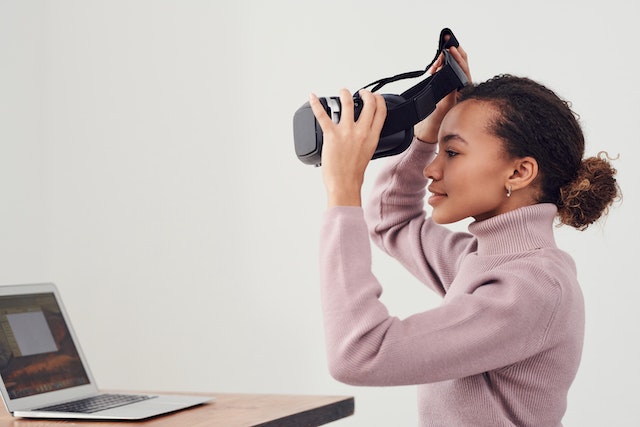
With VR, we could potentially be looking at shared music experiences that go beyond just audio. Think virtual concerts where you not only hear the music but also feel like you're in the midst of the action, right next to other fans.
AI, on the other hand, could enhance personalization, tailoring music recommendations to each listener's tastes and preferences.
Maybe it could even predict the songs that will evoke the strongest emotional connections among groups of friends, facilitating even deeper shared experiences.
No matter how technology evolves, that connection remains key.
So, as we stride into the future of shared music experiences, let's continue to use music as our universal language, a language that speaks to our hearts and connects us, no matter the distance.
The future of shared music experiences is bright, and we're just getting started. Here's to the journey ahead, filled with good tunes, great company, and unforgettable memories.
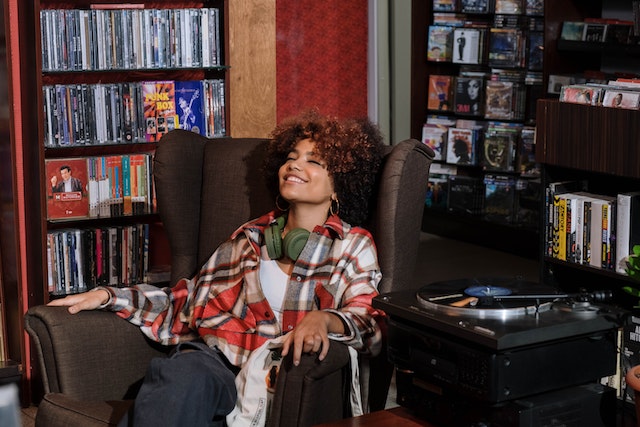
Shared music experiences in the age of social networks - Conclusion
The symphony we've explored so far is thrilling, isn't it? But remember, you can be more than just a spectator.
Why not be a part of the ensemble? With CalypsoRoom, you can step into this world of shared music experiences and let your own rhythm blend into the symphony.
So, why not give CalypsoRoom a try? It's an invitation to not just listen to music but to experience it, together. It's a chance to create unforgettable memories with friends near and far.
Let CalypsoRoom be your stage, where you can share your love for music with the world.
And if you're curious to know more about the world of shared music experiences, our blog is just the place for you.
Packed with informative, engaging, and inspiring content, it's your backstage pass into the world of shared music experiences in the age of social networks. See you there!
In conclusion, remember this: Music has the power to connect, and in the age of social networks, this connection has the potential to be deeper, broader, and more engaging than ever before.
Let's embrace it. Let's share it. After all, in the symphony of life, we're all musicians.
Thanks for reading,
The CalypsoRoom Team
Frequently Asked Questions (FAQs)
How are music experiences shared on social networks?
Music experiences are shared on social networks through several methods. Users can post about songs, albums, or concerts they're enjoying, share lyrics or music videos, or engage in discussions about their favorite artists, thereby fostering a shared sense of enjoyment and community.
What impact do social media platforms have on music discovery?
Social media platforms have significantly influenced music discovery by enabling users to share and discover new music seamlessly. They facilitate recommendations through algorithms and user-generated content, while artists use these platforms to release new songs and albums, increasing their reach.
How has social media influenced the music industry?
Social media has drastically altered the music industry by providing artists with direct access to their fans. It has democratized music distribution, allowing emerging artists to gain visibility without relying solely on traditional channels such as radio and record labels.
Can social networks help musicians promote their music?
Yes, social networks can greatly assist musicians in promoting their music. Artists can utilize these platforms to share new releases, announce tour dates, engage with fans, and even provide behind-the-scenes content, helping them to cultivate a devoted fanbase.
What are the benefits of shared music experiences on social media?
Shared music experiences on social media can enhance personal connections and cultivate a sense of community among users. These shared experiences can lead to increased enjoyment of music, provide a platform for discussion and critique, and help spread awareness of lesser-known artists or genres.
How do social networks connect music enthusiasts?
Social networks connect music enthusiasts by providing platforms where they can share, discuss, and engage with music. They can join groups dedicated to specific genres, artists, or local music scenes, and participate in discussions, collaborative playlists, or virtual concerts, forging connections with like-minded individuals.
back
Written by CalypsoRoom Editorial Team
The CalypsoRoom Editorial Team is a skilled and diverse group of writers, researchers, and industry specialists who have access to Calypso's data and information in order to give you broad knowledge about the music industry as well as helpful advice to help you manage your music and dancing career.
Updated August 2023
Company number: 681223
James's Walk 31, Dublin, Ireland
contact@calypsoroom.com
+353 (89) 435 8928


